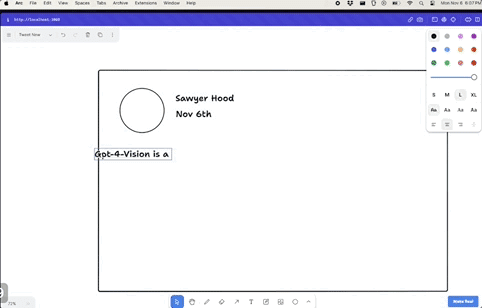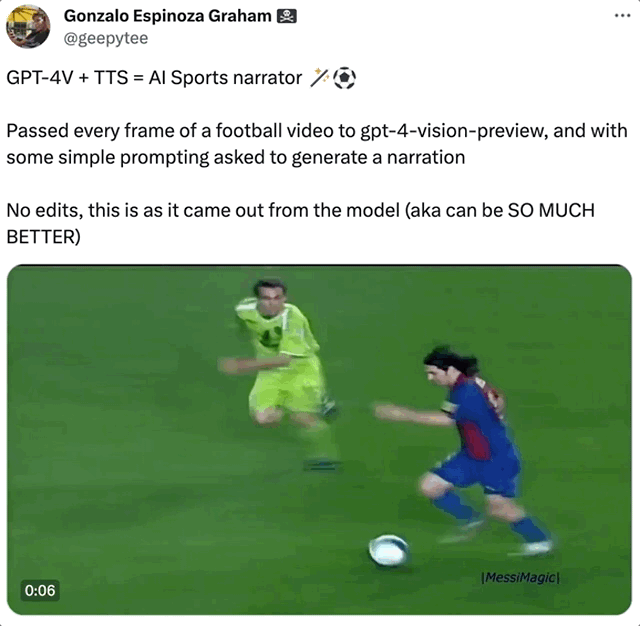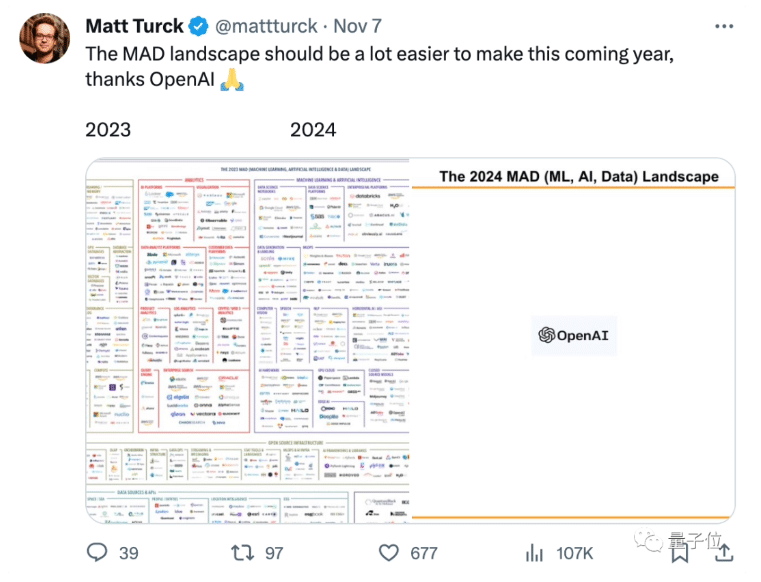ChatGPT that hasn’t officially launched yet, and someone has already taken the lead?
Now, the various experts who have obtained early access qualifications can’t stop their creative ideas from flowing.
They are directly designing a GPT for an interactive website, turning a sketch into a preview in minutes.
Or how about a GPT that converts entire images into GIFs, making cats come to life in an instant?
Even Midjourney experts are observing, and planning to create a GPT with Midjourney-related prompts (a form of NTR in front of DALL·E 3).
Users who haven’t had the chance to play with it are wide-eyed:
When will it be open for everyone??
“Being a prompt engineer might become a legitimate profession.”
So, before GPT is officially open to everyone, let’s take a look at the various ways it can be used.
The creativity of experts is exploding.
GPTs, in a nutshell, are like an application store containing various GPTs for different purposes.
No coding is required, just a conversation, and everyone can create their own customized GPT, for sharing or private use.
And if it becomes popular, you might even make money.
Although GPTs are not yet open to the public, some beta testers have already given us a sneak peek.
For example, Professor Ethan Mollick from the Wharton School tried creating a product design GPT in less than a minute.
Here’s an introduction to the product design GPT page he created:
From the video, it’s clear that GPT is fast in both design and interaction, taking about 90 seconds from idea to prototype.
It has a wide range of functions: not only can it search for information online, but it can also quickly generate images and describe their style.
Well, the shoes designed by this AI are a bit too avant-garde…
Let’s also look at the webpage optimizer GPT developed by user Seth Kramer.
This GPT has a “discerning eye,” analyzing the layout of a webpage from an aesthetic perspective and providing suggestions.
If you think your webpage design is not up to par, you can ask this GPT for targeted advice.
And after image-to-GIF, user Nick Dobos scores another win.
He developed a task management tool GPT based on babyAGI, which can break down tasks, and prioritize them quickly, and efficiently.
User Rowan Cheung created an application for optimizing posting times and content – a user operations GPT:
Apart from these, many users have shared their new tools developed based on the latest GPT-4 or GPT-4V models.
For example, an item recognizer that can identify all objects in the camera within a minute:
△ Image source: Twitter Benjamin De Kraker
After identifying the objects, it can even engage in real-time video chats with GPT…
△ Image source: Twitter SkalskiP
Want a “face-to-face” chat? Try a virtual anchor GPT based on OpenAI TTS, SadTalker, and SDXL models:
Not just chatting, it can even combine with TTS to create an AI soccer commentator, down to the frame:
Of course, some users who haven’t tried GPTs yet are already thinking about how to use them.
For example, writers and publishers can upload an e-book PDF and create a paid assistant reader GPT!
This way, GPT can not only summarize the content of the book directly but also answer questions that appear in the book, truly a 24-hour thoughtful Q&A.
New customized GPTs are emerging like mushrooms, and some startups are feeling the pressure.
“ChatGPT is becoming the new iPhone.”
Do you remember the viewpoints expressed by OpenAI CEO Ultraman at the recent YC alumni sharing session?
“Copying OpenAI is destined to fail!”
Although it seemed like a meme at the time, with the release event, it seems like that statement might come true.
Professor Yi Ran Chen from Duke University commented after watching the event:
Small developers without access to large models or similar data that OpenAI has will struggle.
A user even made a meme, suggesting that the future of MAD (Machine Learning / AI / Data) in the next year looks promising.
Because there’s only OpenAI left.
Some frustrated startup founders lament:
OpenAI destroyed my $3 million startup, and all I got was $500 worth of OpenAI API credits.
But in this situation, some users still say they would choose ChatGPT—
For no reason other than having users.
A comment on HN states:
ChatGPT is becoming the new iPhone.
Dealing with closed platforms has never been a great experience, but we do it because that’s where the users are.
Furthermore, some users have listed the profit situations of various app stores over the years. Regardless of the app store, its potential value is enormous.
Would you join OpenAI’s GPTs app store? Which ChatGPT application are you most excited about?
Read Also: Humane AI Pin Will Be Released Next Month With Built-in ChatGPT









